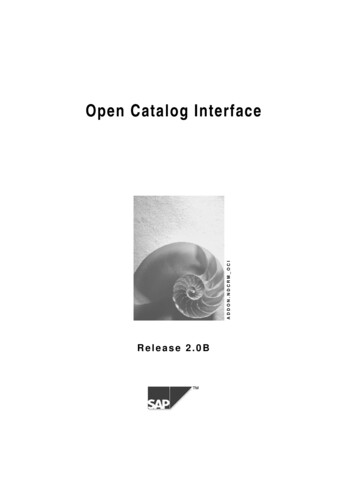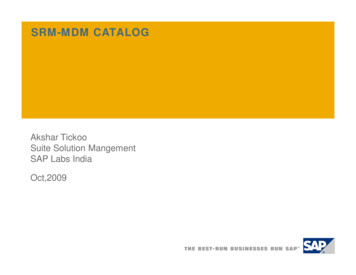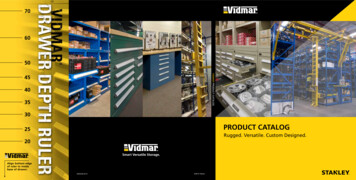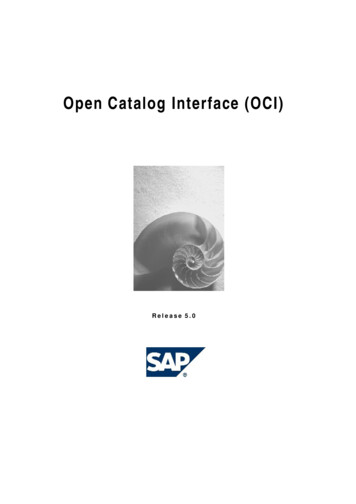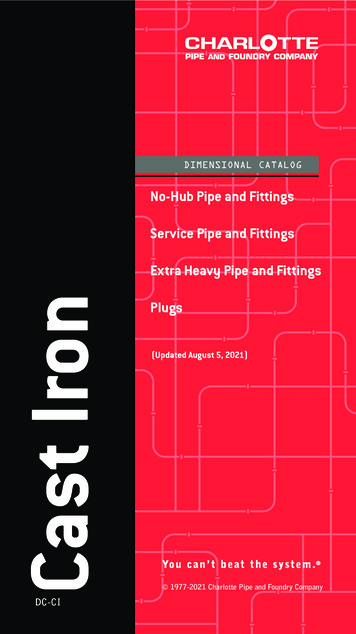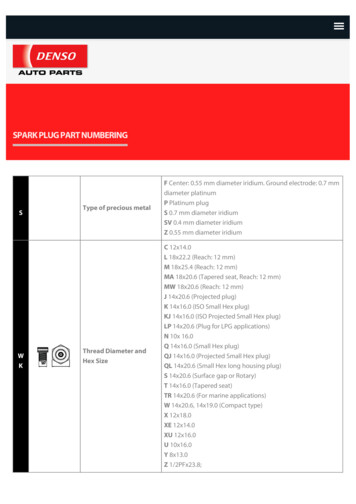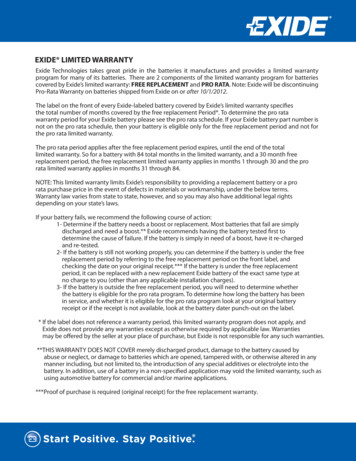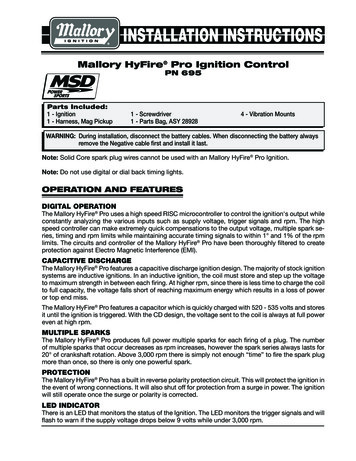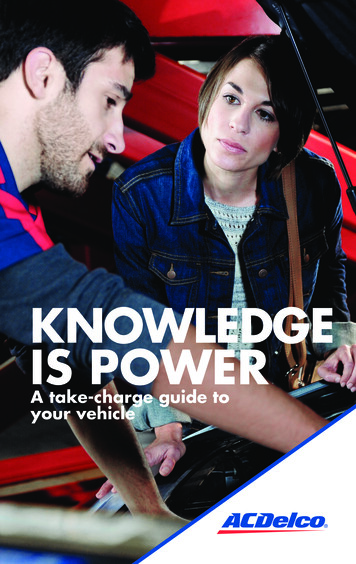
Transcription
KNOWLEDGEIS POWERA take-charge guide toyour vehicle
TABLE OF CONTENTSRegular maintenance1Recognizing problems3Preparing for your appointment6Safety on the road7Travel tips11Emergency road kit13Avoiding collisions14Defensive driving tips15Caring for your vehicle16
MAINTENANCE GOES A LONG WAYStaying on top of your vehicle’s care is one of the best ways to keep yourvehicle running smoothly. From routine oil changes to replacing air filters andeverything in between, adhering to a routine maintenance schedule goes a longway. Choosing a quality service provider to care for your vehicle is an importantcomponent to help keep you on track. When choosing a service provider,consider these things: Technical expertise Quality of parts Hours and location Sense of trust Specific service specialtyCHECK YOUR TREADS T he condition of your tires can affect everything from handling to gas mileage,so check your tires every 3-6 weeks with a tire pressure gauge (your vehicle’srecommended tire pressure number can likely be found on a sticker inside thedriver’s door). To help equalize wear, tires should typically be rotated every 6,000 to 8,000miles. If you notice any of the following, it may be time for a tire or alignment service:– Wheel bends or dents– Recurring loss of tire pressure– Tire bumps in the sidewalls– Vibration emanating from the wheels– Unusual front-end movement when driving on flat surfacesTIP: When it’s time to check the road wear on your tires, grab a penny! Stick itheadfirst into the most severely worn part of the tire. If the tread is so worn itdoesn’t touch the top of Lincoln’s head, it’s probably time to replace your tires.1
YOUR TRANSMISSION D epending on driving conditions and your specific vehicle’s needs, yourtransmission fluid and filter could require a change anywhere between50,000 and 100,000 miles. T ransmission maintenance requirements vary, so check your Owner’s Manualto review your vehicle’s specifications.TIME FOR A CHANGE F or most newer makes and models, oil changes are recommended approximatelyevery 6,000 – 7,500 miles. If you drive in a dusty region, change your oil and filter every 3,000 – 5,000 miles. Y our vehicle may come equipped with built-in technology to alert you when anoil change is necessary. your vehicle’s maintenance schedule for regular maintenance isTIP: Followingyour best defense against avoidable repairs. Visit acdelco.com to sign up fora free maintenance-reminder service to help you stay ahead of the game.2
SENSING A PROBLEM IS SIMPLEYOUR NOSE ALWAYS KNOWS.POSSIBLE PROBLEMDESCRIPTIONAntifreeze or coolant leakBurning oilElectrical shortEmission failureOverheated brakes or clutchOverheatingSweet odor, usually accompanied by steam from underthe hood.Thick, heavy odor, sometimes accompanied bysmoke from under the hood or exhaust.Pungent odor, like burned toast.Continuous, heavy sulfur odor, like rotten eggs.Burning rubber odor.Hot, metallic odor, usually accompanied by antifreeze/coolant odor.THINGS TAKE A WRONG TURN?CAR TROUBLE SYMPTOMDESCRIPTIONCuts outDetonationDieselingHesitationMissRough idleSluggishSpongyStallSurgeTemporary, complete loss of power. Engine quits atirregular intervals. May occur repeatedly or intermittently,usually under heavy acceleration.Mild to severe pings, usually worse under acceleration.Sounds like popcorn popping.Engine runs after ignition switch is turned off.Runs unevenly and may make knocking noises.Momentary lack of response as accelerator is pressed.Can occur at any speed, usually most severe when startingfrom complete stop. May cause engine to stall.Pulsation or jerking that changes with engine speed.Exhaust has a steady spitting sound at idle or low speed.Not normally felt above 30 mph.Engine runs unevenly at idle. Car may also shake.Engine delivers limited power under load or at highspeed. Doesn’t accelerate as fast as normal. Loses speedgoing uphill. Vehicle has less speed than normal.Little or no increase in speed when accelerator is pressed.Continuing to push pedal down will eventually increasespeed.Engine stops running or dies. May occur at idle orwhile driving.Vehicle speeds up and slows down with no change toaccelerator pedal. Can occur at any speed.3
I SPY A PROBLEM!POSSIBLE PROBLEMDESCRIPTIONAxle leakBlack stains with heavy, thick consistency.Coolant leakYellow, green, pink or orange stains that are lighter andthinner than oil.Crankcase, oil, powersteering fluid leakBrownish stains.Transmission oil leakReddish stains.GET A HANDLE ON HANDLING ISSUES.CAR TROUBLE SYMPTOMDESCRIPTIONBottoming outBrake fadeExcessive playHard steeringLow brake pedalBrake pedal deringSuspension moves to extreme end of travel andhits compression bumpers. Feels like a thud.Stopping distance seems to increase, causing longerbraking distance, similar to braking at high speeds.Steering wheel must be turned unusually far before vehicleresponds.Vehicle is difficult to steer, especially during parkingsituations or when first started.Brake pedal must be pushed unusually far to engagebrakes.Brake pedal fluctuates while brakes are applied.Vehicle veers to one side when steering wheelis released.Vehicle has a tendency to move right or left when brakesare applied. Brakes engage suddenly when driver appliessteady pressure to brake pedal.Rapid side-to-side motion of both front wheels feltin the steering wheel.Mushy or spongy ride; vehicle takes a long time to recoverfrom bumps in the road.Vehicle shakes.Vehicle meanders, requiring frequent steering adjustmentsto maintain direction.4
WARNING LIGHTS GUIDE THE WAYA little light can go a long way, especially when it’s telling you important information about your vehicle. If any light turns orange or red, it means you should haveyour vehicle serviced as soon as possible. Use the guide below for more tips. Temperature Gauge/Light Indicates the temperature of your vehicle’s coolant.A reading in the “H” zone of any light means “HOT” and is an indication oftrouble. Should you receive this notice, pull over to a safe location, shift intoneutral (N) and allow the engine to idle. Do not continue to drive if thetemperature does not return to normal or the “HOT” light stays on. Service Engine Soon (SES) Light This may also be called the Malfunction Indicator Light and is part of the Onboard Diagnostic System, which maintains theEmissions and Engine Control System. Normal operations may show this lightbriefly when the ignition is turned on. If the light remains on during driving,there may be a potential engine problem. If that’s the case, be sure to seekservice promptly. Voltage Gauge/Battery Light This light indicates the electrical system’s voltagewhen the engine is running. Service is required if the battery light comes onor if the pointer moves to either “HIGH” or “LOW,” indicating too much or notenough voltage. Oil Gauge/Light Indicates oil pressure, not the amount of oil in the engine. Acontinuous “HIGH” or “LOW” gauge reading indicates an engine lubricationissue and the need for immediate service. If the oil light stays on after you startthe engine or comes on while you’re driving, you could be low on oil or haveanother problem, so be sure to have your vehicle serviced immediately. OnStar Vehicle Diagnostics* Every month, OnStar-equipped vehicles can runa thorough check of the engine, transmission, anti-lock brakes and other keysystems, and email you the results. If you want an On-Demand Diagnosticscheck, just push the blue OnStar button and our specially trained Advisors canrun a check — even while you’re driving.5
PUT THE BRAKES ON MYSTERY NOISESWhen it comes to your brakes, some noises are normal, while others indicatethere could be a problem requiring service. Here are some common noises andpossible solutions: Grinding Grinding is caused by rust buildup on the rotors and is of littleconcern. The buildup can usually be removed, or sometimes it disappearsafter a few stops. However, if grinding persists, the problem could be moreserious and should be brought to the attention of your service consultant. Loud squeals Disc brakes with wear indicators may produce a squeal, indicatingit’s time to change the pads. Trace squeaks or squeals Semi-metallic brake linings can emit sound. Rain,humidity or cold brakes could be the source. If the problem persists, have thebrakes checked. C licking Sometimes accompanied by a slight pulsing in the brake pedal atlow speeds, it’s most likely the Anti-lock Braking System performing a harmlessself-check.PREPARING FOR YOUR SERVICE APPOINTMENT Write down your vehicle’s symptoms. What noises do you hear? Does theproblem occur when the engine is warm or cold? Be sure to describe thesymptoms and don’t try to diagnose the problem. Y ou can expect to receive a thorough explanation of the procedure to beperformed on your vehicle before it happens. Ask for a copy of the signedestimate so there are no surprises when it’s time to pick up your vehicle. I f you have any tests conducted during the service, ask for a copy of theresults. Save these documents in your glove compartment or in a special placeat home for easy reference. A sk about obtaining a service contract to cover your vehicle in the event ofmechanical failure beyond the manufacturer’s warranty.6
SAFETY AROUND EVERY TURNNothing is more important than your safety and security on the road. Vehiclesafety and security features have been created to keep you and your familyprotected on the road. Be sure to read your Owner’s Manual to learn whichfeatures are included on your vehicle and how to properly operate them.SAFETY BELT TIPS Lap belt should be worn low and snug on the hips, just touching the thighs. Shoulder belt portion should be worn across the chest and over the shoulder. According to the National Highway Traffic Safety Administration, safety belt usereduces occupant fatality rates by 50 percent.TIPS FOR SMALL-STATURE ADULTSIf you have trouble reaching the pedals of your vehicle and tend to sit veryclose to the steering wheel, you could be hit by the air bag when it inflateswith enough force to experience serious injury. To help prevent an injuryfrom occurring: Always wear your safety belt. Sit as far back as possible while maintaining control of your vehicle. A djustable foot pedals are available in some vehicles and can helpsmall-stature adults sit farther from the air bag.7
ONSTAR* EMERGENCY SERVICES A utomatic Crash Response In a crash, built-in sensors can automatically alert aspecially trained OnStar Advisor and predict the severity of injuries. An Advisoris immediately connected into your vehicle to see if you need help, even if youcan’t ask for it. E mergency Services One push of the red emergency button gives you a priorityconnection to a specially trained OnStar Advisor who can direct emergencyservices to your exact GPS location and offer critical assistance until help arrives. C risis Assist In severe weather conditions or a crisis, our Advisors can providea fast, knowledgeable resource if you need emergency assistance, escaperoutes and other resources. They can also contact family members for you.AIR BAG SAFETY TIPS R emember that air bags work in conjunction with safety belts, not as areplacement. D o not sit unnecessarily close to an air bag. When deployed during a crash,air bags inflate at a high speed that can seriously injure or even kill anyonesitting up against it. O ccupants should not lean on—or sleep against—the door or side windows invehicles that have seat-mounted or roof-rail air bags. In certain vehicles, head curtain air bags are designed to deploy in the eventof a rollover to help protect occupants. S ee your Owner’s Manual for information about the location and operation ofthe air bags in your vehicle.8
KEEPING LITTLE ONES SAFE AND SECUREYou take great care to keep your children protected, and their safety on the roadis a top priority. Here are a few important tips to help ensure a safer ride for yourprecious cargo: Secure all children under the age of 13 in a rear seat. B ooster seats should be used if a child has outgrown his/her forward-facingchild restraint, and until they are about 4'9" tall and weigh between 80pounds and 100 pounds. I nfants and young children need the protection of a properly installed childrestraint or booster seat. N ever put a rear-facing child restraint seat in the front vehicle seat, even ifthe passenger air bag is off. It can cause serious injury or death in the eventof an accident. I t’s best to install a forward-facing child restraint in rear vehicle seats. If thisisn’t possible for your vehicle, then carefully read your Owner’s Manualto understand how to properly install a forward-facing restraint in the frontvehicle seat. T he Lower Anchors and Top tethers for CHildren (LATCH) System helps simplifythe installation of a child restraint and is compatible with both forward- andrear-facing child restraints. O nly use a backless booster seat if your vehicle’s seatback or head restraint ishigher than your child’s ear. Otherwise, use a high-back booster seat. Checkyour state law mandates on booster seats for complete details of usage.For more safety and security tips and other helpful information, contact your localSAFE KIDS Coalition at safekids.org.9
TEEN DRIVER SAFETYThe teen years are a risky time for young drivers. In fact, these crucial yearspresent the greatest risk to new drivers. While driver’s training classes teach theimportant fundamentals, there are further steps your teen can take to decreasehis/her risk. The Graduated Driver License system,* for example, has many tipsdesigned to keep teens safe. Some of the key elements of this system include: Require a minimum of 50 hours of driving experience over the course of 9 to12 months, under the direct supervision of a licensed driver—either a parentor other mature adult. Set nighttime limitations and passenger restrictions, reducing nighttimerestrictions over time. Work as a family to develop a vehicle expectation plan with clear directionand consequences. For example, are friends allowed in the vehicle with yourteen? Decide these key things ahead of time as a family. Require safety belt use for everyone in the vehicle, every time, no excuses.And, of course, obey all other laws. GM supports a ban on texting while driving for all drivers. GM encouragesall drivers to pair their cell phones with their vehicles and use the integratedaudio system. Avoid any tasks that cause a distraction to driving. Remember that parents are role models, guides and partners during the teendriving experience. While many states include some elements of the Graduated Driver Licensesystem, families may want to incorporate additional fundamentals that are notpart of their state’s new-driver laws.10
TRAVEL TIPS THE WHOLE YEAR THROUGH Always keep at least half a tank of gas in your vehicle. C heck all fluids, including oil, antifreeze, transmission, brake andpower-steering fluids and windshield solvent. Make sure your wipers work and that the blades get replaced periodically. F requently check tires for pressure and air. Not only are properly inflated tiressafer, they give you better fuel mileage and longer tire life. Make sure yourspare tire is properly inflated and ready in case you need it. M ake an appointment for an inspection. Clean air filters and new spark plugsmean better gas mileage. H ave your tires rotated. While you’re at it, have the wheel alignment checked.Potholes can affect wheel alignment. This not only causes handlingproblems, but tires wear out faster. L et someone know where you’re going, what time you’re leaving andwhen they can expect you—especially when you’re driving though isolatedareas. Take a map and cell phone with you.IF YOU BECOME STRANDED: Call for roadside assistance. S tay in your vehicle. That’s where you’re safest. Motorists can be injured if theyexit their vehicles on busy roads. Emergency crews can find your vehicle a loteasier than they can find you alone. If the temperature is below freezing, youcan avoid frostbite and hypothermia by staying in the vehicle and out of thesnow and wind. Tie a brightly colored cloth to the exterior of the vehicle. eep the doors locked. If strangers approach, roll the window down just Kenough to ask them to get help.11
TIPS FOR WHEN THINGS HEAT UP ever leave children alone inside a vehicle. N– On a typical sunny day, the temperature inside a vehicle can reachpotentially deadly levels within minutes—even with a window open.– Heat is much more dangerous to children. When left in a hot vehicle,children’s core body temperature can rise three to five times faster than thatof an adult. This may cause permanent injury or even death.– To remind yourself that you have a child with you in the vehicle, place thediaper bag or other child-associated item in the front-passenger seat. T he hot days of summer strain your vehicle’s cooling system. A failure couldleave you stranded with an overheated engine. To avoid a potential problem,check the cooling system and look for leaks, worn or bulging hoses and malfunctioning fan operation.TIP: C aught in a traffic jam? Leave plenty of room between you and the vehicleahead of you so the radiator can do its job. If the engine overheats, turn off theair conditioner and turn on the heater. You may be a bit uncomfortable, but theheater acts as a second radiator and can help cool the engine.TIPS FOR WHEN THINGS COOL DOWN W hen snow, ice or water are present, increase the distance between you andthe vehicle ahead of you. Allowing more stopping distance gives you moretime to react should you hit a patch of ice or slip on the water or snow. I n extreme cold, always use properly mixed antifreeze. Never use water inyour radiator. A void exposure to the cold and overexertion when attempting to push thevehicle or shovel heavy snowdrifts.12
EMERGENCY ROAD-KIT ESSENTIALSConsider carrying the following items in your vehicle at all times: Jumper cables Flares or reflective devices First aid kit Tire pressure gauge Blanket Bottled drinking water Change of clothes Automobile registration Cell phone Copy of your health insurance card Marker and message pad Emergency contacts Flashlight with extra batteries Copy of your motor-club membership card Shovel Window scraper/brush Window washer fluid Sand or rock salt Thermal packs Energy bars Hat and gloves Paper towels Road maps13
VEHICLE SAFETY FEATURES TO HELP YOU STAY INCONTROLELECTRONIC STABILITY CONTROL (ESC) ESC helps maintain control of your vehicle while steering. E SC systems use selective braking to help you control the vehicle’sdirection and keep it on course.DAYTIME RUNNING LAMPS (DRLs) L ocated on the front exterior of your vehicle, these lamps help increase vehiclevisibility for other drivers and pedestrians during fog, rain, dusk and bright sunshine. sing headlamps during daylight hours reduces crashes between 2.3 percent Uand 12.5 percent, depending on the driving conditions and type of collision. D RLs reduce daylight collisions with pedestrians by nearly 15 percent, and by45 percent with children younger than 12.ANTI-LOCK BRAKE SYSTEMS (ABS) A BS helps you maintain steering control during hard braking, especially onslippery surfaces. D uring a panic stop with ABS, hold the brake pedal down firmly—do not pump it.TRACTION CONTROL (TC) P rovides controlled accelerations while allowing limited wheelslip when road conditions are slippery.TIP: B efore entering your vehicle, utilize the SPOT THE TOTSM technique—take aquick walk around the perimeter of your vehicle to check for children, pets ortoys. Once inside, avoid distracting behaviors while driving, including talkingon the phone and/or texting, eating and interacting with children. And keepyour hands on the wheel and your eyes on the road at all times.14
DEFENSIVE DRIVING FOR YOUR PROTECTIONFrom the Bondurant School of High-Performance Driving: Adjust your seat properly. Sitting upright enables your body to feel and sensewhat the vehicle is telling you. Scan the entire environment during normal driving conditions. B e smooth with your steering, acceleration and braking to keep the vehiclebalanced. W atch driving on curves. Drive at a reasonable speed, which may mean youneed to drive slower than the posted speed limit. Driving at a high speedaround curves could cause you to lose control. T rail the brakes. This means to ease off the brake pedal slowly as you turn intoa corner. It keeps the weight on your front-steering tires, creating more tractionfor the turn. E levate your vision. Things come at you fast when you look only at the vehiclein front of you. Look 10 to 15 vehicles ahead and you’ll find that everythingcomes at you more predictably. T urn your wheels with the skid. Taking this action may help you to regaincontrol of your vehicle. If you have a skid situation, ease off the throttle totransfer weight back onto the front-steering tires.15
SIMPLE WAYS TO CARE FOR YOUR VEHICLE Eliminate roll shifting. Always come to a complete stop before shifting fromDrive into Reverse or vice versa. U se your parking brake on hills. When you set the parking brake and theignition is on, the brake system warning light will come on. To prevent anydamage to your brake system, make sure the parking brake is fully releasedand the warning light is off before driving. D on’t ride the clutch. If your vehicle is equipped with a manual transmission,improperly releasing the clutch pedal, pushing it too far or not far enoughor riding it at the point of engagement can damage parts. Strive for smooth,seamless shifting. F ill your tank. Allowing your gas tank to run dry or be consistently low canlead to problems. Fuel pumped from a relatively dry tank may carry oxygen,moisture and deposits into the fuel line, and this could damage the fuel filter orfuel pump. It’s best to fill your tank any time it’s less than one-third full. B eware of additives. Mixing additives into oil, transmission fluid orgasoline may upset the chemical balances that already exist in these fluids.Stay away from additional additives unless recommended by your serviceconsultant. C hoose soap designed for clearcoat paint finishes. The presenceof abrasives could weaken the clearcoat and dull the finish. Dishwashingdetergent can be hazardous to your vehicle’s finish. Soaps made fortoday’s clearcoat finishes are available at auto parts stores, grocerystores or drug store chains. F ollow your vehicle’s maintenance schedule. It’s best to change youroil, filters and spark plugs and to conduct other maintenance as outlinedin your Owner’s Manual.16
HELPFUL RESOURCES TO CONTINUE LEARNINGacdelco.comDiscover vehicle maintenance tips, service reminders and much more fromACDelco.carcare.org/womens boardThe Car Care Council Women’s Board is comprised of professionals from theauto care industry who are dedicated to providing career leadership to womenin the auto care industry.epa.govThe United States Environmental Protection Agency website is the place todiscover environmentally conscious tips and clean-driving information to helplessen your impact on the environment.nhtsa.govReceive safe-driving tips and information from the National Highway TrafficSafety Administration, including the most up-to-date information on changes inthe automobile industry.
1 MAINTENANCE GOES A LONG WAY Staying on top of your vehicle’s care is one of the best ways to keep your vehicle running smooth

